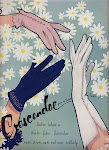But, that being said, I do find the unexpected joys of parenthood are limitless and never found where you look for them. My attitude is throw enough poop against the kid and something is bound to stick, with a resounding plop, so while he was the only one under 40 at the matinee for Freud's Last Session and certainly the only visitor I noticed under 21 at the Francis Bacon show at the Met -- (see my earlier Blog entitled: Life's Shutter, for just how well that went but be prepared, it meanders purposefully to that moment, but I think it's worth it.) the ability to have a conversation about Theatre, God and Art with my child was well worth it.
His response to Freud, an imagined conversation between Sigmund F, an 80 something-year-old atheist dying of mouth cancer and C.S. Lewis, a once avowed atheist who at 33, decided he was a Christian and is now a 40 year old Oxford Don, was one of those joyous moments. The actors are meeting at Freud's apartment in 1939 London on the eve of Chamberlain's Declaration of War against Germany and what my son found most interesting; after acknowledging the debate over God's Existence was a draw, was that the younger character was the believer and older one, the atheist, since he thought it was usually the other way around. As his Mom, I love having this kind of conversation with my child. It allows me to demonstrate that Art and Music and Theatre are important.
I don't believe in limiting his exposure, as long as it's not violent or sexual in nature. The sexual thing is primarily because he gets embarrassed. As a matter of fact, when my husband had "The Conversation"* with my son in his bedroom several years ago, while I giggled in the kitchen, like the immature person that I am, my son came tearing down the hallway, hands over his ears, protesting that he had heard enough.Violence, on the other hand, is should be seen by no one, as far as I am concerned.
* Not the be confused with "The Conversation", a very fine film from 1974 by Francis Ford Coppola.
Did I mention that Jeff worked at the Metropolitan Museum for over 15 years? He is so much fun to talk to about Art. Today's excursion was no exception. Beginning at the top of the famous Guggenheim spiral was a video installation, part of a show on contemporary imagery - both photography and video. The show, entitled: Haunted: Contemporary Photography/Video/Performance, has been described as examining contemporary photography and and video that possesses "a melancholic longing for an otherwise irrecuperable past." Nicely written. (For more visit: http://www.guggenheim.org/new-york/exhibitions/on-view/haunted-contemporary-photography-video-performance.)
The first piece was a six screen looped film installation of Merce Cunningham sitting in a traditional mirrored dance studio on a metal folding chair. The machines showing the films were quite delicate and soundless and the museum had gone so far as to cover the dome and lower the lights to ensure the film would be clearly seen. Each of the cameras were projected at the walls at different angles, were varying sizes, and showed either a close-up or mid-range shot of this incredible choreographer sitting quietly, barely moving. The label described the piece as the video artist capturing Merce Cunningham's choreography to John Cage's Silent Symphony with Three Movements in six parts. I defy you to explain that to a a 15 year old. I suggested to him that we look for the invisible Score.
So, there we were, what we actually came for, The Geometry of Kandinsky and Malevich, a lovely little exhibit, seated in front of the canvas Conversation 8, which is just glorious.
 |
| Vasily Kandinsky Conversation 8, July 1923 Oil on Canvas, 140x201cm |
 |
| Kasimir Malevich Mystic. Suprematism 1920-1922 Oil on Canvas, 100.5x60 cm |
He returned a few moments later to ask about Kandinsky and his evil laugh. Huh?
Jeff and I exchange looks.
My son has been reading a label on the wall which says in bold print, Kandinsky and the Bauhaus. My son is not at all familiar with Bauhaus, so he has twisted the word to fit his frame of reference and reflect his wit with words. To him, he tells us, this reads Bwa-Ha's, as in the cartoon villian who maniacally cackles -- Bwa - ha - ha.
And there is it, another one of moments, the unexpected joy of parenthood.

























